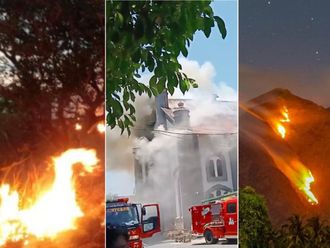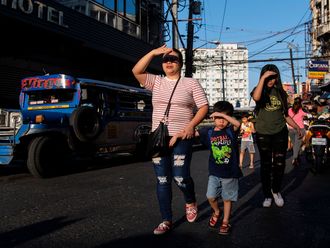Manila: The administration of President Rodrigo Duterte announced plans to increase taxes on vehicle ownership in a bid to improve tax collection, as well as improve road traffic conditions.
Finance Secretary Carlos Dominguez III said in a statement that under the programme of the Department of Finance (DOF), the government would start raising the taxes on automobiles beginning 2018. This would give the government enough time to fix problems hounding the rail transit system which is located in Luzon, and put in place alternative modes of intracity travel to encourage people to use mass transport instead of their cars.
“If this move passes muster, it will probably be effective in 2018. So we have a year to fix it. By the way, we are not imposing this to make life hard for people; it will finance [our] infrastructure needs,” said Dominguez.
Road congestion is a perennial problem in certain areas of the Philippines, especially urban areas. In the case of Metro Manila, it had once been described by one writer as “the gates of hell” due to its persistent traffic.
According to a study conducted by the Japan International Cooperation Agency (JICA), the estimated loss from traffic congestion in the Philippines amounts to some P2.4 billion (Dh 177 million) every day. This does not include the toll from greenhouse gas emissions which are expected to increase to 5.72 million tons a year by 2030, compared to 4.7 million tons a year in 2012.
By solving the traffic conundrum, JICA estimates also show that by solving the traffic problem, the Philippine stands to save P1.9 billion (Dh 140 million) a day by 2030 in time cost savings alone.
Experts say the traffic is worsening in urban areas of the Philippines because the roads cannot accommodate the same number of vehicles due to an inefficient road network that is always under repair.
According to Dominguez, a highly progressive tax on automobiles will discourage the purchase of new cars, which in turn, will help stop traffic congestion from getting worse, and reduce air pollution.
“What’s the point of buying a new car and not moving in the streets? That point of the matter is we want to direct the people to use the public transport, as we are making big investments in it, particularly the bus rapid transit system. We are also fixing up the trains, whose maintenance has been neglected over the years,” he said.
He added that part of the solution is to make public transport available to more people.
“We have to discourage new cars because just look at the traffic, It’s not moving,” he added.
He said the worsening traffic congestion is not confined only to Metro Manila, but is also happening in other major urban hubs such as the cities of Davao and Cebu.











